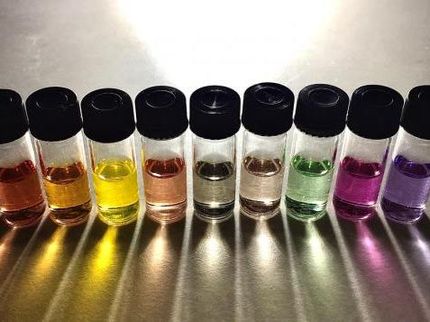Photoelectric switch
A collaboration of scientists from various Beijing institutes, have made a pH-switchable, DNA-quantum dot hybrid that can also generate a photocurrent depending on the pH, allowing DNA to change conformation from a quadruplex to a double strand.
Zhiyong Tang, Dongsheng Liu and colleagues from the National Center for Nanoscience and Technology are working with Lei Jiang from Chinese Academy of Sciences and colleagues from Peking University. They have designed a biomimetic photoelectric conversion system by immobilizing CdSe/ZnS core shell quantum dots and functionalized i-motif motor DNA on the surface of a gold electrode. Through combining the broad absorption of the core shell nanoparticles and the pH sensitive i-motif DNA motor; dynamic modulation of photocurrent generation has been achieved. This so called ‘photoelectric switch’ could have potential applications in photovoltaic devices and functional smart materials.
Tang and co-workers took their inspiration for this work from the photosynthetic behaviour of a typical submerged aquatic plant, Hydrilla verticillata, which photosynthesizes at different rates, depending on the pH of the surrounding aqueous environment. ‘We were curious to see whether we could find a way to realize dynamic modulation of photoelectric conversion in devices, with a similar change in pH value,’ says Tang. This was achieved by changing the pH value (of the electrolyte), so that the change in the conformation of motor DNA altered the electron transfer distance between the photo-excited quantum dots and the gold electrode.
Dynamic modulation is of great importance in many fields because, in addition to DNA, many artificial polymers undergo similar configuration changes after exposure to external stimuli. Tang expects that the combination of quantum dots and polymers will dramatically enrich the study on dynamic modulation of photoelectric conversion and will speed up their practical applications in smart devices.
The biggest challenge facing scientists in this field will be to make this device on a larger scale while still preserving the exact configuration change of the DNA or polymer, even after several application cycles.
Original article: Meng et al.; "Photoelectric conversion switch based on quantum dots with i-motif DNA scaffolds"; Chem. Commun. 2009
Most read news
Organizations
Other news from the department science

Get the chemical industry in your inbox
From now on, don't miss a thing: Our newsletter for the chemical industry, analytics, lab technology and process engineering brings you up to date every Tuesday and Thursday. The latest industry news, product highlights and innovations - compact and easy to understand in your inbox. Researched by us so you don't have to.





























































